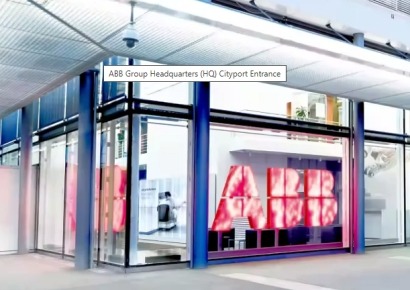
District heating systems use a network of insulated pipes that takes heat from central energy sources and distribute it across a neighborhood or entire city. This approach is technology agnostic and can switch between available heat sources, depending on actual cost and demand. However, energy efficiency is a constant critical success factor irrespective of the heat source.
The sources of thermal energy distributed by district energy systems vary. It might be a facility that provides a dedicated supply to the heat network, such as a combined heat and power plant (CHP), large scale heat pumps, or “waste” heat from industrial processes or large data centers.
Drive deployment offers quick ROI
Motors used in district energy systems usually run constantly at full speed. To adjust the airflow of a fan or the flow from a pump, operators generally use mechanical methods such as throttling, which is inefficient and energy-wasting.
Adopting variable speed drives (VSDs) can be instrumental in achieving the desired output for optimal heat carrier flow rates and pressures. A VSD adjusts the motor’s speed to suit the application’s exact requirements. As a result, operators can match the energy supply to the needs of the building without affecting comfortability levels.
Depending on the application, VSDs can generally produce energy savings of 20 to 60 percent. Network operators can substantially reduce energy consumption in heat generation, transmission, and distribution by pairing VSDs with the latest IE4 or IE5 efficiency class motors. This can instantly reduce a facility’s carbon footprint. Given escalating energy costs, we’re finding that return on investment is often realized within a year or less.
High system reliability through digitalization
District energy systems must demonstrate high reliability and efficiency at all times. Therefore, operators should consider digitalizing the process with sensors and connectivity devices to improve operational resilience. This will allow them to collect performance data, while the VSD can deliver information on energy consumption and load profiles to improve decision-making.
Sensors placed throughout the system can help operators identify potential performance issues and take early action before they escalate. Advanced drive systems, such as those using artificial intelligence (AI), can automatically detect blockages in air systems, gears needing lubrication, heat pumps with impending bearing failures or other compromising issues.
Decarbonizing district heat supply in Denmark
The Danish port city of Esbjerg is determined to become a CO2-neutral municipality by 2030, especially since it is close to a world heritage site. The city believes district heating will play a critical role in this regard. Accordingly, it’s developing a new hybrid renewable district heat plant to replace heat supplied by its coal-fired CHP plant.
Esbjerg commissioned ABB to provide integrated electrical infrastructure for a 50 MW seawater heat pump to deliver green heat to the city’s inhabitants. ABB will supply its complete range of products, including motors and VSDs, for the pump’s powerhouse. The seawater heat pump uses toxicologically safe CO2 as a refrigerant. With the technology, renewables will power the entire heating network through connections to the offshore wind turbines in the North Sea.
The need for speedy integration
District heating networks offer arguably the most efficient, fuel-flexible, and environmentally friendly promise to integrate low-carbon energy sources into the heating energy mix. Smart digital solutions that connect multiple heat sources to retrofit existing grids for higher energy efficiency levels can effectively address climate change.

